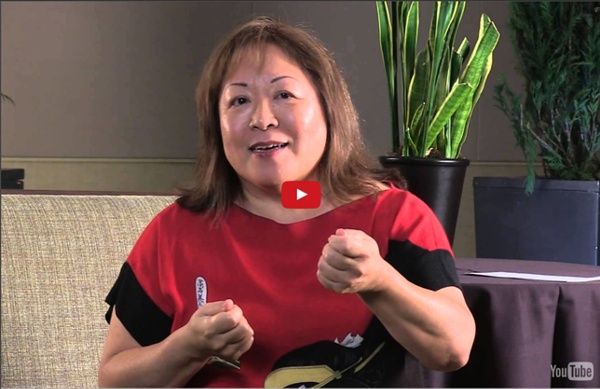



http://www.youtube.com/watch?v=1dFCXqolfLg
Hanks Balanced Salt Solution - An Evaluation of Biofield Treatment Comparative Physicochemical Evaluation of Biofield Treated Phosphate Buffer Saline and Hanks Balanced Salt Medium Phosphate buffer saline (PBS) has numerous biological and pharmaceutical applications. Hank buffer salt (HBS) has been used as a medium for tissue culture applications. This research study was aimed to investigate the influence of Mr. Trivedi's biofield energy treatment on physicochemical properties of the PBS and HBS. "Antibiogram and Genotypic Analysis using 16S rDNA after Biofield Treat" by Mahendra Trivedi Abstract Morganella morganii (M. morganii) is one of the important nosocomial pathogen associated with the urinary tract infections and bacteremia. The aim of this study was to evaluate the effect of Mr.
Human Energy Treatment for Increasing Tomato Yield Abstract: Recent studies report the effect of biofield treatment on changes in structural characteristics of organic and inorganic matter, on cancer cells in vitro and on overall plant development. This study tested the impact of the same treatment applied to lettuce and tomato seeds and transplants (Lactuca sativa var. capitata and Lycopersiconesculentum var. Roma) in commercial plantings with and without fertilizers and pesticides, in relation to yield, quality, and pest inhibition. Treated lettuce plants with fertilizer and pesticide applications were more vigorous, exhibited less incidence of soil-borne fungal wilt, and subsequent yield was statistically greater 43% compared to untreated plants. Antibiogram and Genotypic Analysis using 16S rDNA after Biofield Treatment on Morganella morganii Citation: Trivedi MK, Branton A, Trivedi D, Nayak G, Gangwar M, et al. (2015) Antibiogram and Genotypic Analysis using 16S rDNA after Bioeld Treatment on Morganella morganii. Adv Tech Biol Med 3: 137. doi: 10.4172/2379-1764.1000137 Page 2 of 8 Volume 3 • Issue 3 • 1000137
Investigation of antimicrobial susceptibility of E. cloacae Abstract Soybean production in Iowa USA is among the most productive for raínfed regions in the world. Despite generally having excellent soils, growing season temperatures and rainfall, soybean yields are decreased by weed interference and inadequate available soil water at key stages of crop development. A field study was conducted at two locations in lowa in 2012 to determine if seed-applied fungicide or biofield treatments influenced weed community, soil volumetric water concentration and soybean yield and quality. Application of biofield treatment resulted in lower density of tall waterhemp density, greater soybean stand density at R8 stage and greater seed pod-1 compared to the absence of seed fungicide and biofield Soil volumetric water content varied by seed fungicide x biofield x date interaction but differences were not consistent among treatment combinations. Download the original manuscript
Evaluation of Phenotype and Genotype of Enterobacter Aerogenes Abstract Enterobacter aerogenes (E. aerogenes) has been commonly described as a versatile opportunistic pathogen in hospital infections. The aim of the present work was to evaluate the impact of biofield treatment on E. aerogenes for its phenotypic and genotypic characteristics. E. aerogenes bearing ATCC 13048 (American Type Culture Collection) was procured from Bangalore Genei, in sealed pack and divided into control and treated groups. Study of Antimicrobial susceptibility of S. Marcescens Abstract Serratia marcescens (S. marcescens) is Gram-negative bacterium, associated with hospital-acquired infections (HAIs), especially urinary tract and wound infections. The present study was aimed to evaluate the impact of biofield treatment on phenotyping and genotyping characteristics such as antimicrobial susceptibility, biochemical reactions, biotype, DNA polymorphism, and phylogenetic relationship of S. marcescens (ATCC 13880). The lyophilized cells of S. marcescens were divided into three groups (G1, G2, and G3).
Multidrug Resistant Isolates of Pseudomonas Aeruginosa Abstract In recent years, prevalence of multidrug resistance (MDR) in Pseudomonas aeruginosa (P. aeruginosa) has been noticed with high morbidity and mortality. Aim of the present study was to determine the impact of Mr. Trivedi’s biofield treatment on MDR clinical lab isolates (LS) of P. aeruginosa. Five MDR clinical lab isolates (LS 22, LS 23, LS 38, LS 47, and LS 58) of P. aeruginosa were taken and divided into two groups i.e. control and biofield treated. Control and treated group were analyzed for antimicrobial susceptibility pattern, minimum inhibitory concentration (MIC), biochemical study and biotype number using MicroScan Walk-Away® system.
Antimicrobial Sensitivity of Staphylococcus Saprophyticus Abstract Staphylococcus saprophyticus (S. saprophyticus) is a frequent cause of urinary tract infection in the young women. The current study was designed to analyze the effect of biofield energy treatment on S. saprophyticus for evaluation of its antibiogram profile, biochemical reactions pattern and biotyping characteristics. Two sets of ATCC samples were taken in this experiment and denoted as A and B. Sample A was revived and divided into two parts Group (Gr.I) (control) and Gr.II (revived); likewise, sample B was labeled as Gr.III (lyophilized).
Potential Impact of Biofield on HIV Viral Load Test Abstract Viral load quantification is the amount of particular viral DNA or RNA in a blood samples. It is one of the surrogate biomarker of AIDS. High viral load indicates that the immune system is failed to fight against viruses. Analysis of Multidrug Resistant S.Maltophilia Abstract Stenotrophomonas maltophilia ( S. maltophilia ) is a Gram-negative bacillus, an opportunistic pathogen, particularly among nosocomial infections. Multi-drug resistant strains are associated with very high rate of morbidity and mortality in severely immunocompromised patients. Present study was designed to evaluate the effect of biofield treatment against multidrug resistant S. maltophilia . Clinical sample of S. maltophilia was collected and divided into two groups i.e. control and biofield treated which were analyzed after 10 days with respect to control.
Genotyping Characterization of Staphylococcus Aureus Abstract Staphylococcus aureus (S. aureus) is the key organism for food poisoning due to massive production of heat stable exotoxins. The current study was attempted to investigate the effect of Mr.